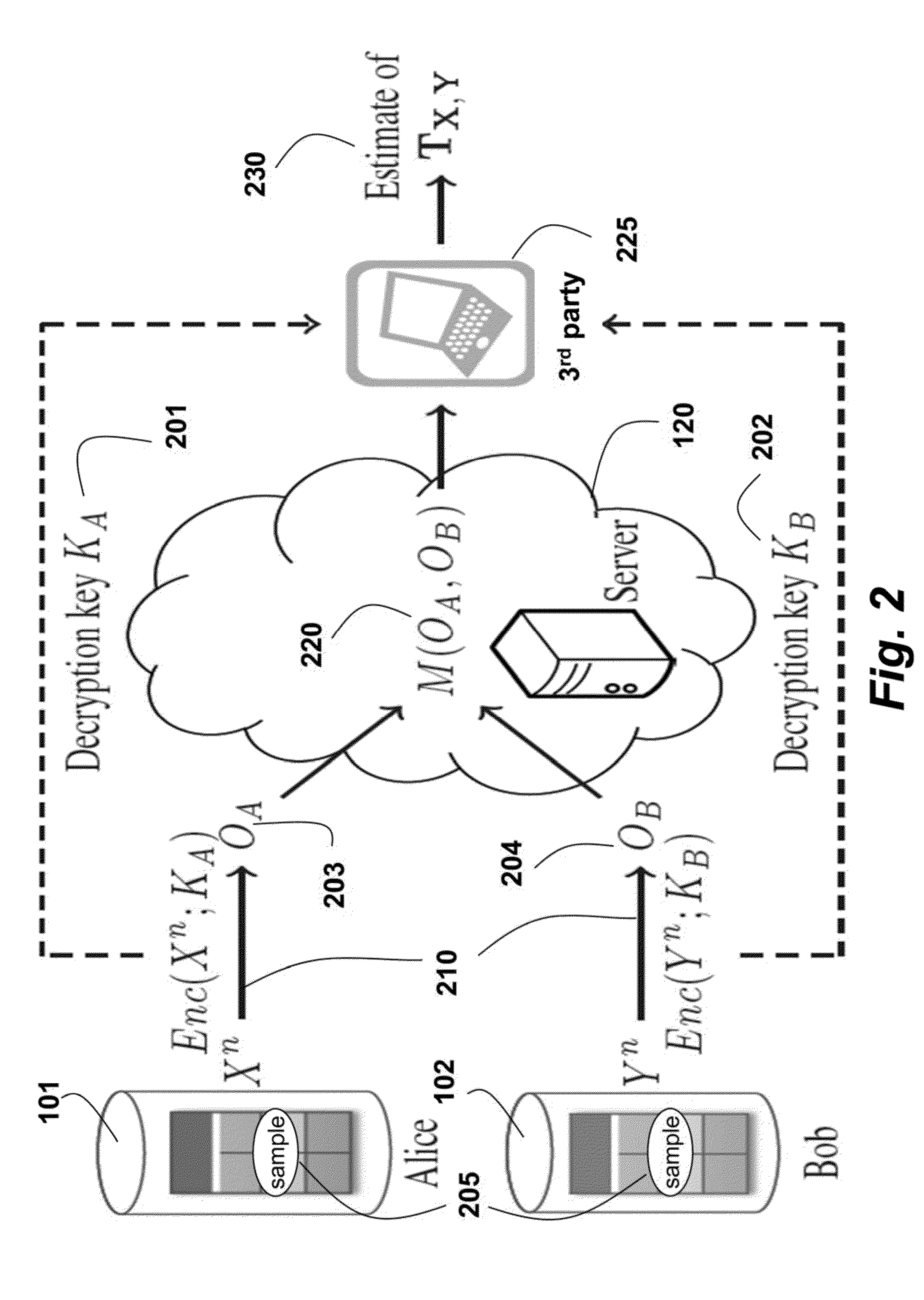Privacy Preserving Statistical Analysis on Distributed Databases
- Summary
- Abstract
- Description
- Claims
- Application Information
AI Technical Summary
Benefits of technology
Problems solved by technology
Method used
Image
Examples
example
[0095]Let a and b be two distinct elements in (X×Y). Let (xn,yn)=(b, a, a, . . . , a), ({dot over (x)}n,{dot over (y)}n)=(a, a, . . . , a) and (xm,ym)=(b, b, . . . , b). Let E denote the event that the first element (where the two databases differ) is sampled, which occurs with probability (m / n). We can determine the likelihood ratio as follows
PX^m,Y^m|Xn,Yn(x^m,y^m|xn,yn)PX^m,Y^m|Xn,Yn(x^m,y^m|x.n,y.n)=Pr[E]γ(1 / q)m+(1-Pr[E])(1 / q)m(1 / q)m=n+m(γ-1)n=eε.
[0096]Thus, the value of ε is indeed tight.
[0097]Because of the privacy analysis for given system parameters of database size n, number of samples m, and desired level privacy ε, the level of PRAM perturbation, specified by the γ parameter of the matrix A, is
γ=1+nm(eɛ-1).(2)
[0098]Privacy against the server is obtained as a consequence of the one-time-pad encryption 210 performed on the data before the transmission to the server. The encryptions received by the server are statistically independent of the original database as a consequenc...
PUM
 Login to View More
Login to View More Abstract
Description
Claims
Application Information
 Login to View More
Login to View More - R&D
- Intellectual Property
- Life Sciences
- Materials
- Tech Scout
- Unparalleled Data Quality
- Higher Quality Content
- 60% Fewer Hallucinations
Browse by: Latest US Patents, China's latest patents, Technical Efficacy Thesaurus, Application Domain, Technology Topic, Popular Technical Reports.
© 2025 PatSnap. All rights reserved.Legal|Privacy policy|Modern Slavery Act Transparency Statement|Sitemap|About US| Contact US: help@patsnap.com



